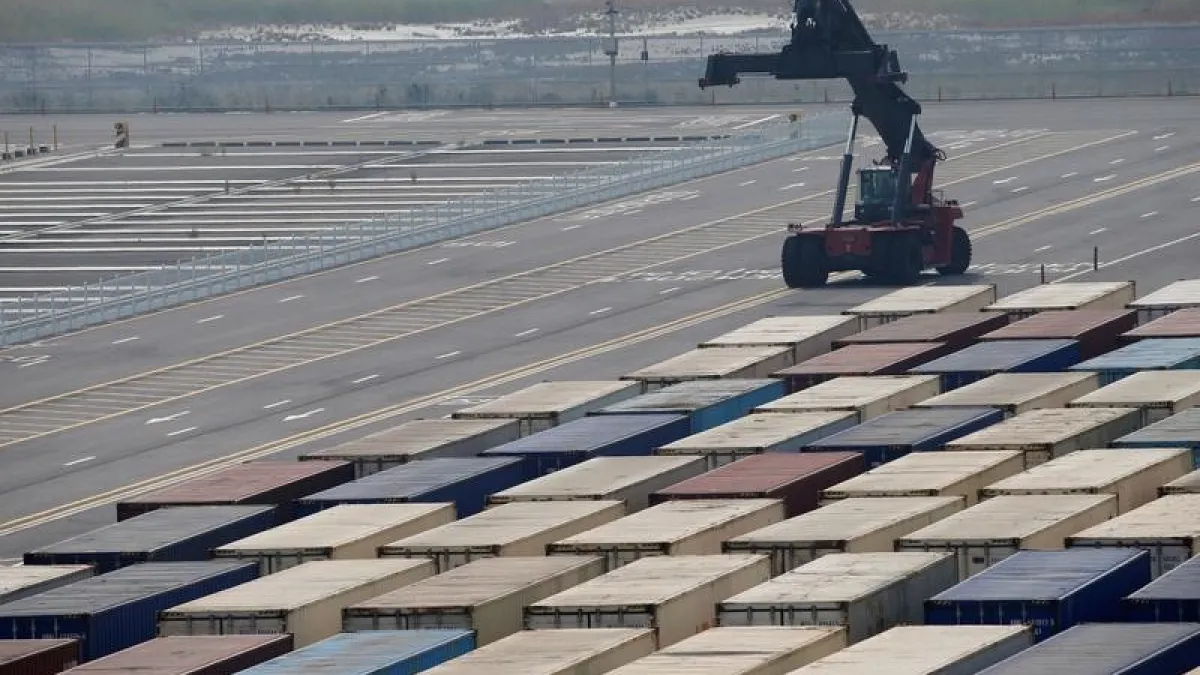
Aiming to rewire the global trading system to more explicitly benefit the United States, President Trump gave countries around the world until August 1 to negotiate new trade agreements with the world’s leading consumer nation. As that deadline rapidly approaches, the White House has announced a flurry of new trade agreements and declarations:
* On Thursday, Trump gave Mexico a 90-day reprieve from a threatened 30% tariff on imports into the U.S. not covered by an existing trade pact, leaving a 25% tariff in place. The move comes despite Trump’s announcement Wednesday that the August 1 deadline would not be extended.
“The complexities of a Deal with Mexico are somewhat different than other Nations because of both the problems, and assets, of the Border,” Trump wrote Thursday on his social media platform, following a phone call with Mexican President Claudia Sheinbaum
* On Wednesday, Trump announced a trade agreement with South Korea that includes 15% tariffs on goods imported from the Asian industrial powerhouse, the 6th largest U.S. trading partner, as well as a pledge by South Korea to invest $350 billion in the U.S. economy. South Korea was facing a threatened 25% tariff starting on August 1.
* Trump signed an executive order Wednesday imposing a threatened 50% tariff on imports from Brazil, while also slapping sanctions on the Brazilian Supreme Court justice who is managing the prosecution of former President Jair Bolsonaro, a Trump-like figure who stands accused of trying to overthrow the government. There are exemptions from the 50% tariff, though, including key U.S. imports such as aircraft and orange juice, as well as refined copper — a move that caused a record plunge in prices for copper in New York. Legal experts have questioned Trump’s authority to link trade deals with the internal political decisions of foreign nations.
* The U.S. is still working to reach a trade agreement with Canada, which faces the threat of a 35% tariff on goods not covered by the existing U.S.-Mexico-Canada trade pact. But Trump said Thursday that it would be “very hard” to make a deal following an announcement by Canada that it may recognize a Palestinian state, subject to certain requirements. Legal experts have questioned Trump’s authority to link trade deals with the diplomatic decisions of foreign nations.
* The White House appears to have hit a stumbling block in its talks with India, too, with Trump saying earlier this week that he plans to hit Indian imports with a 25% tariff on August 1. Trump has complained about India’s protectionist tariffs, as well as its purchases of Russian oil and military equipment.
* In addition to nation-specific tariffs, Trump has imposed sector-specific tariffs on various goods including steel, aluminum and vehicles. Returning to an executive order he signed in May, Trump on Thursday threatened 17 leading pharmaceutical manufacturers with higher tariffs unless they lower prices within 60 days. Trump demanded that manufacturers extend the “most-favored-nation price” to Medicaid beneficiaries for all drugs, and to all insured Americans for newly developed drugs. He also called on drugmakers to raise prices on “freeloading” foreign nations and to return some of their increased revenue to American consumers via lower prices.
What happens on deadline day: Trump is expected to sign an executive order Friday that defines a new minimum tariff for all imports. Trump announced a minimum tariff of 10% in April and has recently suggested that the new minimum could be twice that.
The White House may also send letters to dozens of countries that have failed to negotiate new trade agreements, informing them of the tariff that U.S. importers will have to pay to purchase goods produced in their countries. The threatened tariffs that could take effect first thing Friday include 32% on imports from Taiwan, 35% on Bangladeshi goods and 30% on South African goods.
Whatever the final numbers, the political divide over Trump’s new tariff regime can be expected to continue. Expressing a view held by many Trump supporters, Republican Rep. Lauren Boebert celebrated the tariffs Wednesday. “I thought tariffs were going to destroy our economy?” she said. “I guess the experts were wrong once again.”
Democrats, though, continued to rail against Trump’s approach to tariffs, which are domestic taxes paid by U.S. importers and consumers. Senate Majority Leader Chuck Schumer called Trump’s tariffs a “trade war on the American people” that is causing “chaos and uncertainty” throughout the economy. “No one knows what’s coming when Donald Trump has no plan, no strategy, and he’s not honest about what he presents,” Schumer said Thursday.
Courts could intervene: Beyond political challenges, Trump’s tariffs also face a potential legal hurdle in the form of a lawsuit from a mix of states and private companies questioning the legal basis for the president’s aggressive trade policies. At a hearing Thursday, federal judges seemed sympathetic to the suit, which challenges Trump’s use of the International Emergency Economic Powers Act of 1977. The White House claims that the IEEPA allows Trump to raise tariffs, given the supposed national emergency of a large trade deficit. The law has previously been used to impose sanctions, but never tariffs.
“One of the major concerns that I have is that IEEPA doesn’t even mention the word tariffs anywhere,” said Judge Jimmie Reyna of the U.S. Court of Appeals for the Federal Circuit.
Other judges indicated that IEEPA was meant to be used during an international crisis, and that Trump was usurping legislative powers. “It’s just hard for me to see that Congress intended to give the president in IEEPA the wholesale authority to throw out the tariff schedule that Congress has adopted after years of careful work, and revise every one of these tariff rates,” said Judge Timothy Dyk.
Some judges, though, seemed more sympathetic to the claim that the trade deficit represents an “extraordinary threat” to the nation.
The case is expected to end up at the Supreme Court.